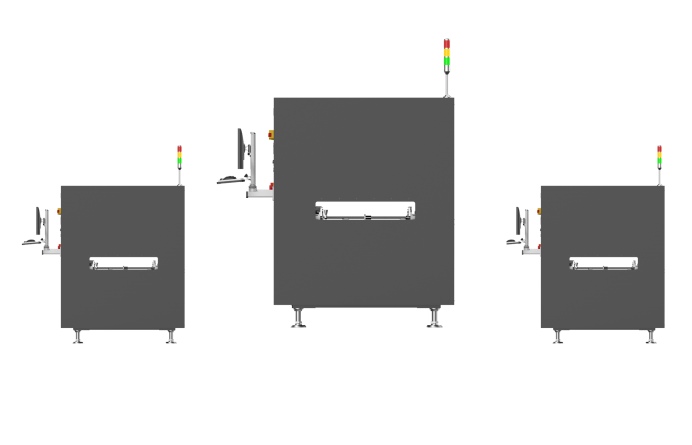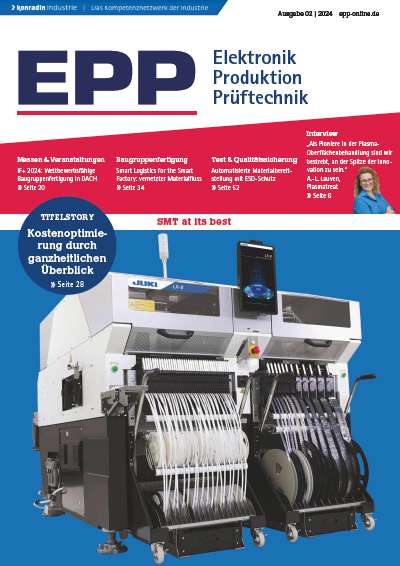Both polyurethane and epoxy resins have been used in electronics (especially packaging technologies) for many decades, usually in defined areas. Changes in technology have extended the range of properties of both types of resin systems, making the choice of material complex.
However, the right selection of resin can offer substantial savings in terms of both cost and manufacturing time, and concurrently offer considerable improvements in the design, such as mechanical strength, optical clarity, etc. For the process, production rates will depend upon the cure and post-cure regimes required by a resin. Slow cures will tie up jigging and space, and may necessitate using elevated temperatures to improve production rates. High temperature cure schedules can lead to post-cure shrinkage, imposing stress that may affect the component life. Many epoxy resins require gelling at ambient temperatures and subsequent post curing at high temperatures to maximize and stabilize the properties. Both of these cure considerations would push the process in the direction of a polyurethane system that could offer faster ambient temperature cures, giving faster production rates and reducing the costs tied up in plant, jigging and space.
In the design stage, the parameters that affect the longevity and efficiency of a device may be of highest importance. Traditionally, polyurethanes offer fast ambient temperature cures to provide a flexible product that can reduce stress on components and improve thermal cycling tolerances. However, the resin formula-tion technology offers many propertiesfor both the process and the design stages that can improve the specification and production.
The ability of an isocyanate (hardener) to react with a hydroxy-terminated polyol (resin) is the basis of polyurethane chemistry. If an isocyanate with two (or more) reactive groups is joined by polyols with reactive groups then chain extension will occur, forming a longer molecule. The join is a urethane linkage, and the molecule is a polyurethane. Much of this chemistry has made available new polyols and isocyanates using the same reactive groups but differing in the structure of the molecule held between them. Branched polyols increase the reactive groups in each molecule to more than two, and causes the polyure-thane to cross-link.
What is polyurethane?
A material using this may be higher in modulus and more glass-like when cured. Increases in the hard segment ratio by this means have led to polyurethanes that offer properties more typically seen in epoxies, but often with additional enhancements such as optical clarity or weathering resistance. The base polyol may contain a long unreactive unit between the two reactive hydroxy terminations. These molecules are used to increase the soft segment ratio of the polyurethane, and polyurethanes formed in this way may be soft elastic materials but retaining the outstanding electrical insulation properties, the excellent UV stability and the water resistancethat its harder relatives have exhibited. The chemist can adapt the materials to produce cured resin systems that give customers a range of physical properties from soft gels through to rigid materials with hardness in the epoxy range (shore D > 80). Usually these can be produced in cure times over a wide range from minutes to as one or two hours, and with much lower exothermic temperature rises than the comparative epoxy system which result in thermal shrinkage and stress to components.
The flexibility of the range available to the polyurethane chemist is highlighted in following application-dependant properties shown:
• Low thermal cycling stresses – ideal for potting of ferrites and glass reed switches
• Anti vibration damping – a spin-off resulting from the elastomeric nature of polyurethane
• Water white clarity – epoxies can be formulated to provide clarity but this is not stable and will rapidly deteriorate
• Tough wear resistance – the inherent rigid nature of epoxies precludes their ability to withstand long-term wear
• Low cure stresses – again the rigid nature, chemical and thermal shrinkage experienced with epoxies will result in cure stresses
• Acoustic absorption with modulus control – tight control can be achieved in polyurethane formulation to absorb, or not, particular wavelength spectrums
• Environmental protection – the careful selection of base materials can result in the characteristics required for environmental protection without resorting to toxic materials that are usually required to achieve a similar performance in an epoxy system.
• UV resistance – not possible to formulate in epoxy and consequently such systems degrade on long term exposure to sunlight
• Flexible adhesion – particularly important to protect the ingress of moisture on assemblies subject to thermal cycling
• Antistatic properties – not normally found in epoxy systems
• Anticorrosion and water resistance properties are maximized using the intrinsic capabilities of polyurethanes
• Re-enterable materials which provide for repairs
• Self-healing gels – test probes can be inserted into an area of a board and take measurements then be withdrawn and the resin ‘repairs’ itself – impossible using epoxies
• Rigid rapid curing prototyping – the lack of exotherm on rapid cures provides moulds without distortion on demolding
• Low shrinkage which will not cause stress to components
With the increasingly stringent health and safety legislation in Europe, epoxy resins are being eliminated. Polyurethanes arefilling this void, where chemical resistance is paramount.
Outlook & expectations
The constant development of polyols and isocyanates that have high temperature properties will enable the supply of materials with high heat deflection and glass transition temperatures, operating at temperatures up to +150°C and in hostile environments. Resins with great UV stability are increasingly used in opto-electronics. Elastomers are being developed with flexibility and stability at temperatures down to -50°C and continuous operation up to +125°C, often with high thermal conductivies enabling the encapsulation of very fragile components. Most often, these materials retain the flexible cure regime that is tailored to the process requirements.
The suitability of polyurethane materials for rapid reaction prototyping is of major pre-eminence, particularly with water-clear resins of high modulus. Though epoxy resins are now able to offer low temperature flexibility, high operating temperatures, slow cures, long pot lives, outstanding purity, high adhesions and quality cosmetic surface finishes, it is difficult to achieve these properties as a ”whole”. The versatility of polyurethanes allows a greater degree of cure and property variation tailored to meet the users’ requirements. The prediction of performance to particular applications is the greatest asset of polyurethane.
(Information provided by Electrolube)
EPP 170
Zusammenfassung
Speziell beim Vergießen und Verpacken von elektronischen Bauteilen und Schaltungen haben sich Polyure-thane und Epoxy-Materialien in der Elektronik durchgesetzt. Hier in einem kurzen Blick die Erläuterung von Vor- und Nachteilen dieser chemischen Formulierungen.
Résumé
Le polyuréthanne et les matières à base d’époxy se sont imposés dans le moulage et le conditionnement de composants et circuits électroniques. Les avantages et les inconvénients de ces formules chimiques sont présentés de manière succincte.
Sommario
Nel settore dell’elettronica, e in particolar modo poi nella fusione e nel confezionamento di componenti elettronici e di circuiti integrati, il poliuretano e i materiali epossidici si sono affermati. Ecco qui una breve panoramica dei vantaggi e degli svantaggi di queste sostanze chimiche.
Unsere Webinar-Empfehlung
10.10.22 | 10:00 Uhr | Conformal Coating ist ein wichtiges Verfahren, um elektronische Baugruppen vor dem vorzeitigen Ausfall zu schützen. Damit bekommt der Beschichtungsprozess eine immer höhere Bedeutung. Dabei ist die Auftragsstärke ein wichtiges Qualitätskriterium. Nur eine…
Teilen:












